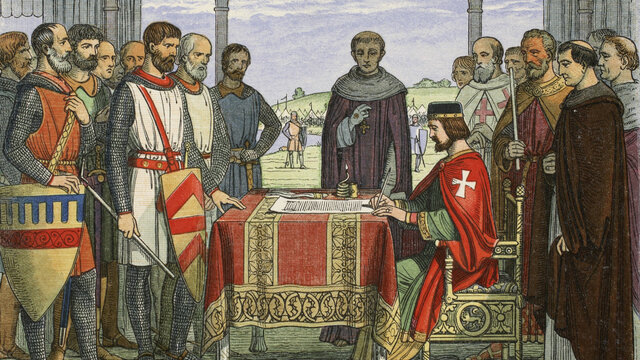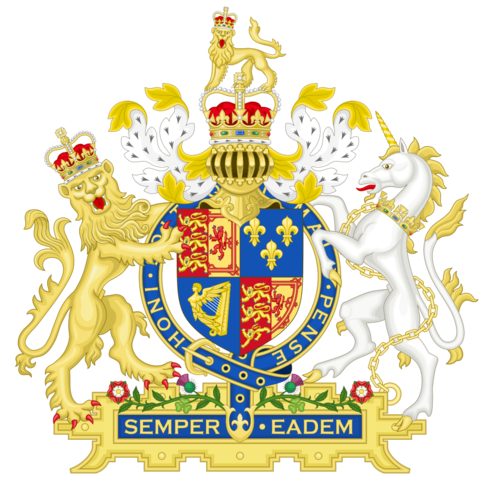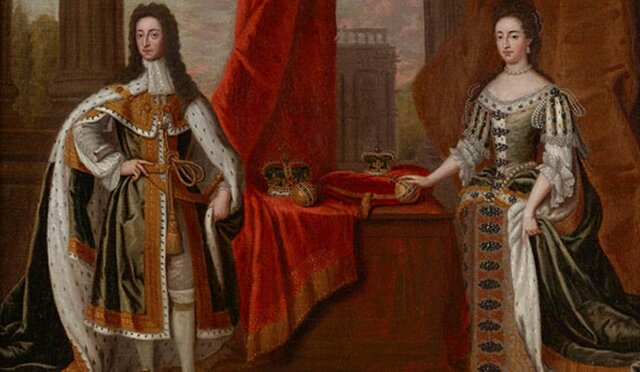-
 The Magna Carta represented the increasingly prevalence of notions of civil liberties and rights. These rights were indicated by the document to be individual freedoms, planting the seeds of the concept of natural rights which would ultimately create the conditions for a limited monarchy in England.
The Magna Carta represented the increasingly prevalence of notions of civil liberties and rights. These rights were indicated by the document to be individual freedoms, planting the seeds of the concept of natural rights which would ultimately create the conditions for a limited monarchy in England. -
 In 1241, the English Parliament, comprised of the House of Lords and the House of Commons, was formally established. What was once intended to be an advisory body to the monarch eventually became the principal force behind the creation of external limits on the power of the monarch in England's limited monarchy.
In 1241, the English Parliament, comprised of the House of Lords and the House of Commons, was formally established. What was once intended to be an advisory body to the monarch eventually became the principal force behind the creation of external limits on the power of the monarch in England's limited monarchy. -
 James IV's marriage to Margaret Tudor formally linked the English and Scottish royal houses, thus leading to the rise of Stuart monarchs on the throne of England. Stuart monarchs would thereafter rule through 1714, during which England became a limited monarchy for reasons directly related to the actions of Stuart rulers.
James IV's marriage to Margaret Tudor formally linked the English and Scottish royal houses, thus leading to the rise of Stuart monarchs on the throne of England. Stuart monarchs would thereafter rule through 1714, during which England became a limited monarchy for reasons directly related to the actions of Stuart rulers. -
 From 1629 to 1640, Stuart King Charles I ruled without Parliament, exploiting every possible legal fundraising device, particularly in levying taxes to previously untaxed areas. An angered populace was pushed to civil war upon his revocation of the rights of Scottish Catholics to worship freely.
From 1629 to 1640, Stuart King Charles I ruled without Parliament, exploiting every possible legal fundraising device, particularly in levying taxes to previously untaxed areas. An angered populace was pushed to civil war upon his revocation of the rights of Scottish Catholics to worship freely. -
 Declaring himself "Lord Protector" of England in 1653, Oliver Cromwell established what was essentially a military dictatorship after the end of the English Civil War and the execution of King Charles in 1649. King Charles was resented by much of England, but the equally despotic rule of Cromwell restored desire for the restoration of the monarchy.
Declaring himself "Lord Protector" of England in 1653, Oliver Cromwell established what was essentially a military dictatorship after the end of the English Civil War and the execution of King Charles in 1649. King Charles was resented by much of England, but the equally despotic rule of Cromwell restored desire for the restoration of the monarchy. -
 After over 30 years of unrest and uncertain leadership, popular opposition to James II prompted the Glorious Revolution, in which the Protestants William III of Orange and Mary II were invited to depose the king. In 1689, the two were declared joint monarchs and would ultimately give Royal Assent to the Bill of Rights that same year.
After over 30 years of unrest and uncertain leadership, popular opposition to James II prompted the Glorious Revolution, in which the Protestants William III of Orange and Mary II were invited to depose the king. In 1689, the two were declared joint monarchs and would ultimately give Royal Assent to the Bill of Rights that same year. -
 Receiving the Royal Assent on December 16, 1689, the Bill of Rights affirmed the powers of Parliament and formally declared that the English people held certain rights which could were not to be infringed upon by any governing body or figure. It served as a foundational document for the limited monarchy which now existed in England and set in motion the continued development of the English constitutional monarchy.
Receiving the Royal Assent on December 16, 1689, the Bill of Rights affirmed the powers of Parliament and formally declared that the English people held certain rights which could were not to be infringed upon by any governing body or figure. It served as a foundational document for the limited monarchy which now existed in England and set in motion the continued development of the English constitutional monarchy.
